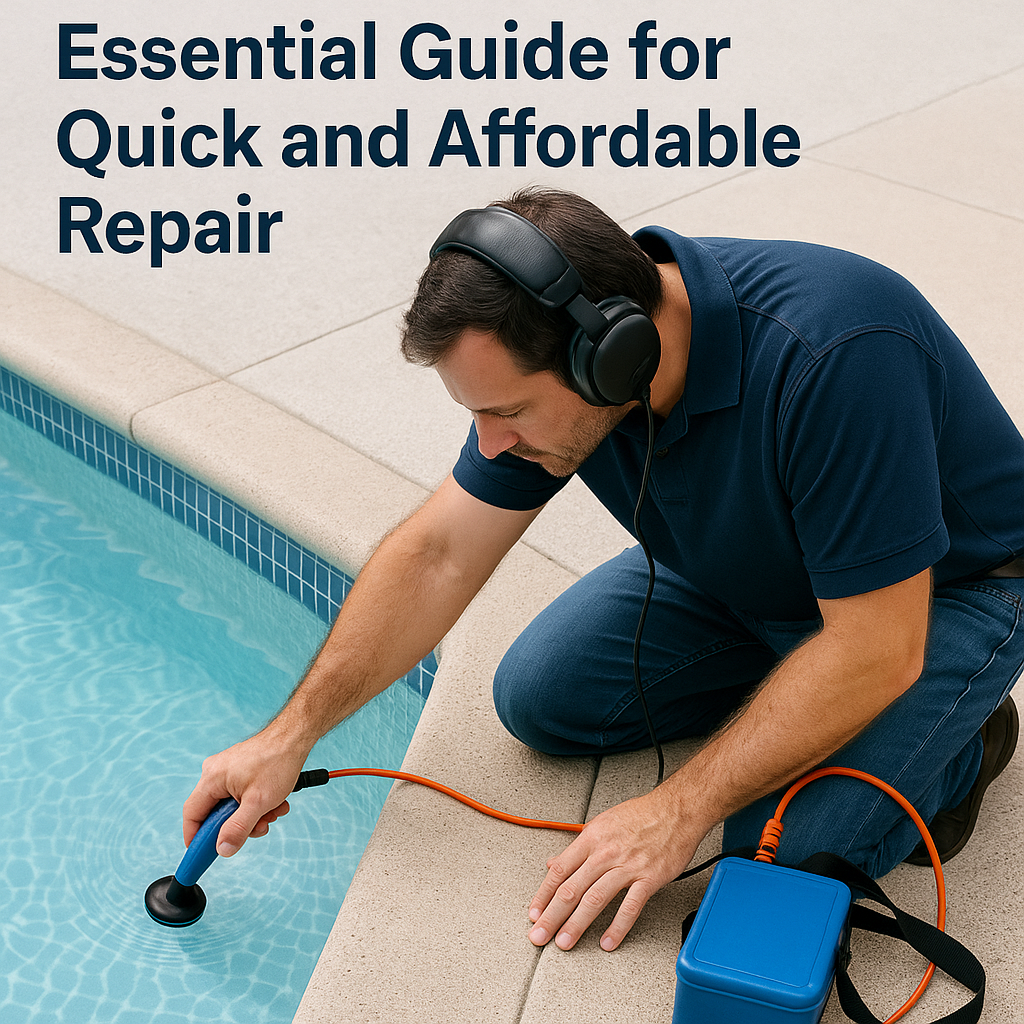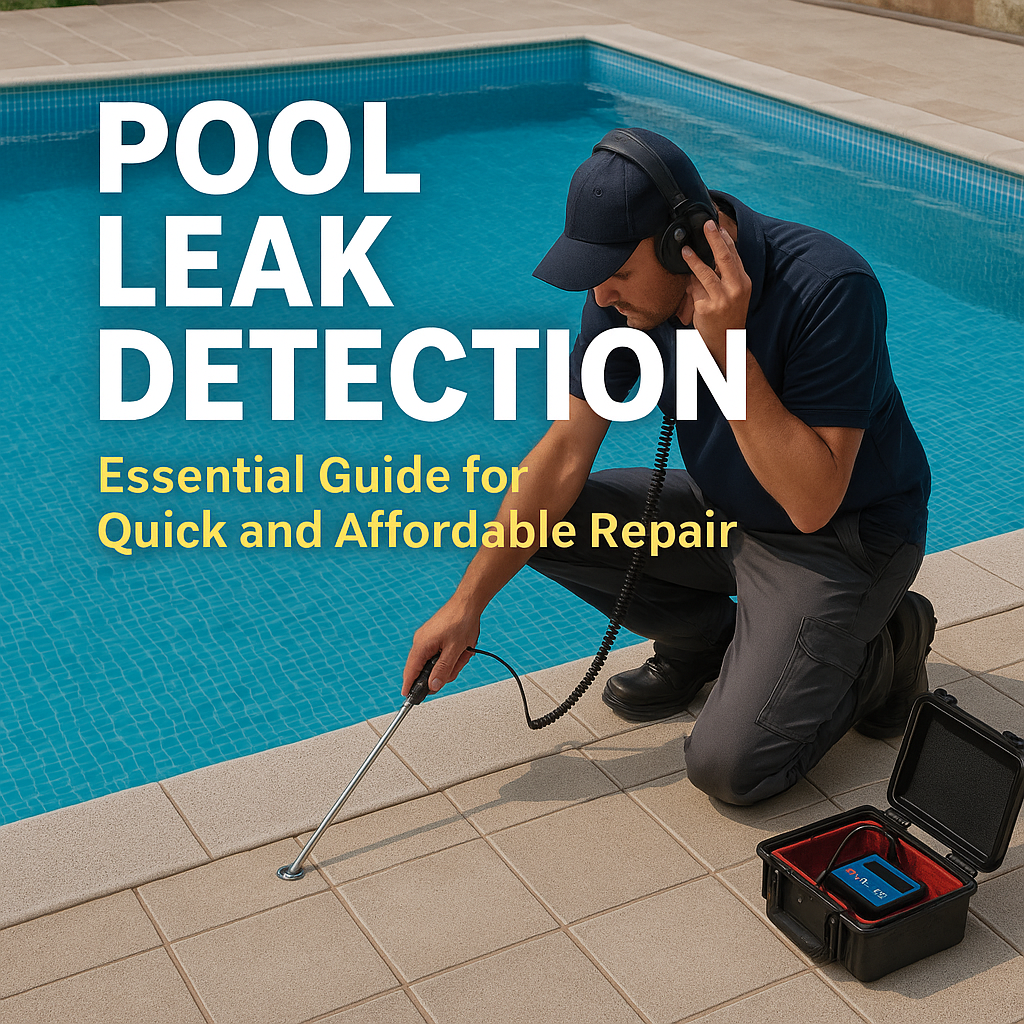Pool leak detection is an essential part of maintaining a healthy, functional swimming pool. Ignoring any signs of a leak can result in extensive damage and costly repairs down the line. So, how do you go about identifying and fixing these common issues? This detailed guide will walk you through the process of pool leak detection and also shed light on quick and affordable pool leak repair tactics.
Pool Leak Detection: Spotting the Signs
Your pool will naturally lose water due to evaporation, splashing, and backwashing the filter. However, if you notice a significant drop in water level, you might be dealing with a leak. Other signs of a possible leak include wet areas around the pool, algae growth despite proper chemical treatment, and cracks on the pool deck or shell.
Take note of these indicators and if you suspect a leak, it’s time to take action.
The Bucket Test: A Simple Method for Pool Leak Detection
One of the simplest methods for detecting a pool leak is the bucket test.
1. Fill a bucket with pool water to about one inch from the top.
2. Put the bucket on the first step of the pool.
3. Mark the water level inside the bucket.
4. Also, mark the pool water level on the outside of the bucket.
5. Leave it for 24 hours and then check the water levels.
If the pool water level drops more than the water level inside the bucket, you might have a leak since the bucket water would also lose some volume from evaporation.
Dye Test: The Surefire Way for Pool Leak Detection
Suppose your bucket test indicates a leak. In such a case, you’d need to determine where the leak is originating. This calls for a dye test.
1. Fill a small bottle with a dye (like food coloring).
2. Turn off the pool pump and wait for the water to become still.
3. Near an area where you suspect a leak, slowly squeeze out the dye.
If there’s a leak, the dye will be pulled towards it. This clever pool leak detection method can help you pinpoint the precise location of the leak.
Quick and Affordable Pool Leak Repair
Once you’ve determined that your pool has a leak and have located it, pool leak repair is the next step. It’s always advisable to keep up with pool maintenance to avoid such issues, but should they arise, there are cost-effective ways to fix them.
Patch it Up
For minor leaks in a vinyl liner pool, an easy fix is a pool patch kit. These are available both for underwater or dry repair. Follow the instructions included in the kit to patch over the leak, providing a temporary fix while you decide on a more long-term solution.
Sealant Solutions
Sealants are another quick, affordable pool leak repair option. These work best for small leaks in concrete or fiberglass pools. You apply sealant directly to the area of the leak, whether it’s in the shell of the pool or the plumbing.
Professional Pool Leak Repair
Some repairs may need professional pool maintenance service. For example, large leaks or complex issues will require a professional’s tools and expertise. While this may cost more initially, it can save money in the long run by preventing further damage to your pool.
Conclusion
Pool leak detection should be a part of your regular maintenance routine. By being proactive and addressing leaks before they become too sophisticated, you can extend the life of your pool and enjoy many more summers of fun. Whether you use a patch, sealant, or hire a professional for your pool leak repair, taking quick action is key to preventing more costly damages down the line.
Remember, a leak-free pool is not just an aesthetic delight but also a sign of excellent pool health and cleanliness. So, keep an eye out for any signs of leaks and act fast to maintain a healthy, enjoyable swimming environment.



